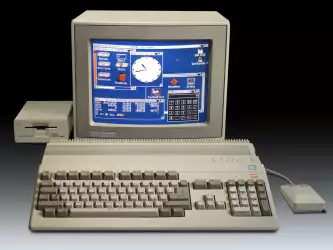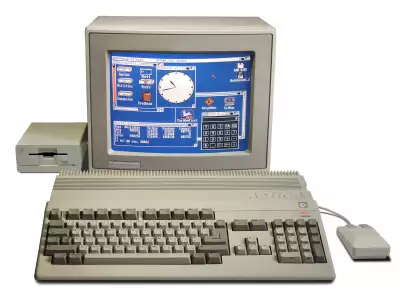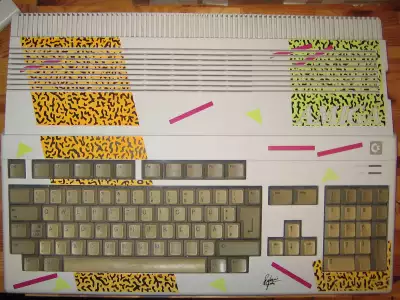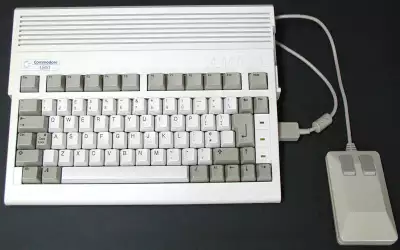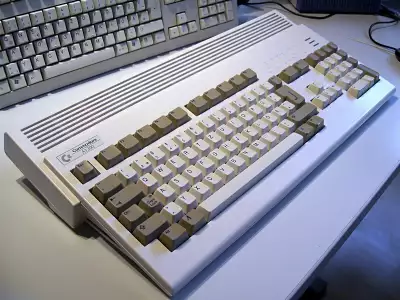Commodore Amiga 500
The Amiga computer, originally developed by Commodore in the mid-1980s, was a pioneering and innovative personal computer platform known for its advanced multimedia capabilities and distinctive features. Here's a brief description:
The Amiga computer was a groundbreaking personal computer line introduced by Commodore in 1985. Renowned for its cutting-edge multimedia capabilities, the Amiga was ahead of its time and left a lasting impact on the computer industry. It featured a unique combination of custom hardware components, including the Amiga chipset and a powerful graphics and sound subsystem.
Key features and characteristics of the Amiga included:
-
Multitasking Operating System: The Amiga's operating system, AmigaOS, was one of the first to offer true multitasking, allowing users to run multiple applications simultaneously without a significant loss in performance.
-
Advanced Graphics: The custom graphics chips (such as the Agnus and Denise) in Amiga computers allowed for impressive graphics capabilities, including hardware-based sprite animation, smooth scrolling, and support for a wide range of screen resolutions and colors.
-
Superior Sound: The Amiga featured a dedicated sound chip, Paula, which delivered high-quality stereo sound and was instrumental in creating immersive audio experiences in games and multimedia applications.
-
Customizable Workbench: AmigaOS featured a customizable graphical user interface called "Workbench," which allowed users to personalize their computing experience.
-
Extensive Software Library: The Amiga had a vibrant software ecosystem with a wide range of games, productivity applications, and creative tools. It was particularly popular among video game developers and graphic artists.
-
Demo Scene: The Amiga was a favorite platform for the demoscene, a subculture of computer enthusiasts who created impressive audiovisual demonstrations to showcase the computer's capabilities.
-
Expansion Options: Amiga computers had expansion slots, making it possible for users to enhance their systems with additional hardware, such as memory upgrades, graphics cards, and hard drives.
-
Longevity: Despite changes in ownership and the eventual discontinuation of the Amiga line by Commodore, dedicated communities of enthusiasts and developers have kept the platform alive through various hardware and software projects.
The Amiga computer, with its innovative hardware and software features, made a significant impact on the computer industry, especially in the areas of multimedia and gaming. Even today, it is fondly remembered as a platform that pushed the boundaries of what personal computers could achieve during its heyday in the late 1980s and early 1990s..
